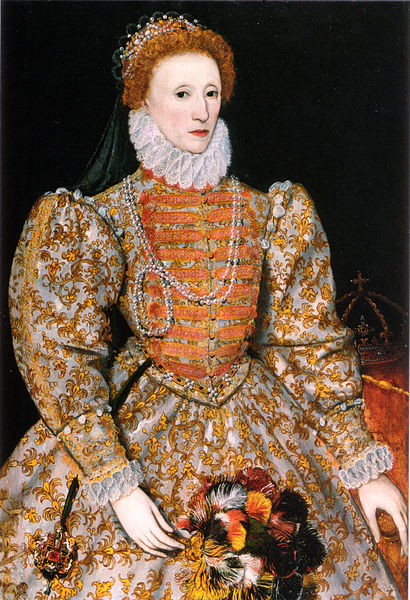She wasn’t supposed to be queen, but after her brother, Edward, and half-sister, Mary, died, she took over and laid the foundation for what would become the British Empire.
Elizabeth I of England was the daughter of King Henry VIII and Anne Boleyn. She was the third queen to rule England alone, assuming the throne at age 25.
Elizabeth was raised a Protestant during a time when most of Europe was Catholic. Her father had a public split with the church over the divorce of his first wife, Katharine of Aragon. Divorce was not allowed, but Henry believed if he was god’s representative, he did not need permission from the church. He divorced Katharine and married Anne. Many considered Elizabeth illegitimate and, thus, not able to ever rule England.
Elizabeth, however, was adept at politics, astute in how the world worked, and highly intelligent. She spoke several languages and was well-versed in Latin.
The nation was bankrupt when she ascended the throne. Religious strife was tearing the country apart. England’s biggest enemies, France and Spain, were a constant threat. Elizabeth moved through the political and religious waters deftly, putting her country on the path from near defeat to one of the biggest empires in the world.
Mary had ruled as a Catholic, but when Elizabeth took over, she made an attempt to convert the entire country to Protestantism. Pope Pius VI responded by excommunicating her in 1570, making it impossible for her to continue her policy of religious toleration.
We now refer to her reign as the Elizabethan era or Golden Reign of Elizabeth. It was a golden time for England where all aspects of English life thrived.
The reign of any monarch, even beloved ones, are complicated and complex nuances need to be addressed by historians. I am not a historian and, while I recognize there were troubles in her reign, she still managed to survive them.
I do not look up to Elizabeth for her defeat – with the help of the British weather – of the Spanish Armada in 1588 as I am generally a pacifist.
I also only admire her stance on religion in her thoughts that religion should be a private affair. Catholicism was illegal, but Elizabeth generally turned a blind eye toward their faith early in her reign.
As time went on, Elizabeth could no longer ignore Catholics as they were often plotting to kill her. She demanded loyalty to her religion and the state.
(Edmund) Campion was one of about 130 priests executed for religious treason in Elizabeth’s reign. A further 60 of their lay supporters were also put to death. Torture was used more than in any other English reign. Margaret Ward, destined for the gallows for organising the escape of a priest, protested that “the queen herself, if she had the bowels of a woman, would have done as much if she had known the ill-treatment he underwent”. But it was the heart and stomach of a king that were required for England’s defence.
She experienced tax difficulties in her later years and struggled with the Spanish and Irish, but it is the learned knowledge she she encouraged during her reign that make her inspiring to me.
Literature flourished under Elizabeth, with writers such as Shakespeare, Marlowe and Spenser gaining notoriety.
Exploration also helped the empire to expand. Elizabeth granted Humphrey Gilbert with a patent in 1578 to explore the world for England. He claimed Newfoundland for England in 1583, but it was his more famous half-brother, Sir Walter Raleigh who is more recognized. Raleigh established Roanoke in 1584 along the coast of modern-day North Carolina.
Sir Francis Drake was knighted by Elizabeth after his circumnavigation of the globe from 1577 to 1580. He also claimed land in the Caribbean for England. He raided Spanish fleets and ports, including Cádiz in Andalusia, Spain, sparking war and the destruction of the Spanish Armada.
Under Elizabeth, colonies were established in North America and trading companies in the East Indies, Turkey and Russia were established. She also established trade with the Barbary Coast.
Companies, such as the East India Company, were incorporated to manage overseas trade and the newly established colonies overseas.
Elizabeth had many suitors during her lifetime, including foreign princes looking to gain influence by an alliance with England, but she never married.
At its height, England was one of the largest empires the world had ever seen. By 1922, it controlled one-fifth of the world’s population across one-fourth of the world.
In the last two years of her life, it has been noted that she suffered from depression, particularly over the series deaths of several of her close friends. According to, “The Reign of Elizabeth: 1558–1603,” by J.B. Black, Elizabeth was in a, “settled and unremovable melancholy,” over the death of Catherine Carey, Countess of Nottingham, the niece of her cousin and close friend Lady Knollys, in February 1603.
Queen Elizabeth I passed away on March 24, 1603. With her death, the Tudor reign was over, but the “Virgin Queen” had raised the status of her people and her nation.


Leave a Reply